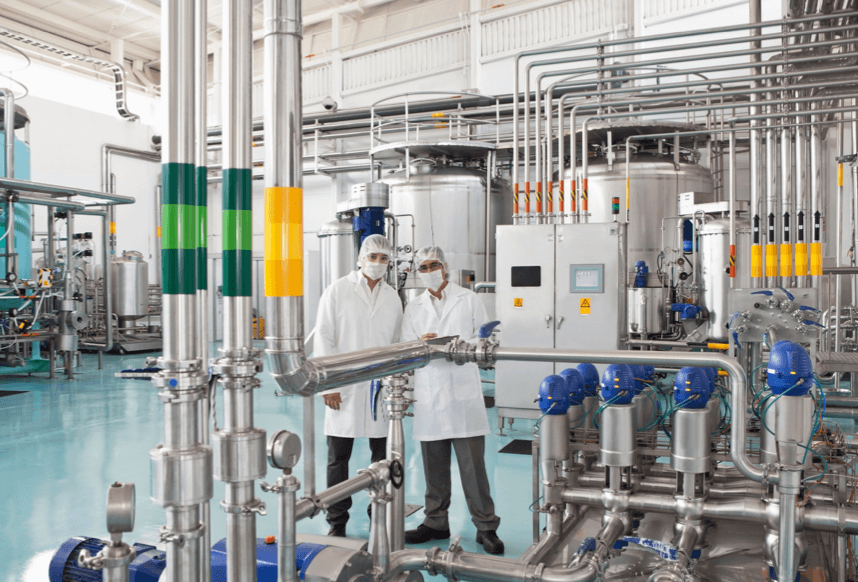Effective Wastewater Treatment Practices in the Salad Dressing Industry

The salad dressing industry has seen significant growth in recent years, driven by increasing consumer demand for convenient and diverse culinary options. However, as production expands, the environmental impact of manufacturing processes has become a pressing concern. One of the most critical aspects of this impact is the generation of wastewater, which contains various contaminants that need effective treatment. This blog explores the effective wastewater treatment practices in the salad dressing industry, focusing on the unique challenges posed by the ingredients and processes involved in production.
The Composition of Wastewater in Salad Dressing Production
Salad dressings typically contain a range of ingredients, including oils, vinegar, herbs, spices, and preservatives. Each of these components contributes to the complexity of the wastewater generated during production. The most significant challenges include:
1. Fats, Oils, and Grease (FOG): The use of oils is fundamental to salad dressings, leading to high levels of fats and oils in wastewater. If not effectively managed, these FOG can cause blockages in pipes and disrupt treatment systems.
2. Organic Matter: Ingredients such as fruits, vegetables, and herbs contribute to a high Biological Oxygen Demand (BOD) and Chemical Oxygen Demand (COD) in the wastewater. Elevated levels of organic matter can deplete oxygen in receiving water bodies, leading to environmental harm.
3. Nutrients: Some salad dressings may include additives that introduce nutrients such as nitrogen and phosphorus into the wastewater. Excessive nutrient loading can cause algal blooms and other ecological problems in aquatic systems.
4. pH Levels: The acidity of certain dressings, especially those containing vinegar or citrus, can lead to low pH levels in wastewater, which can be harmful to aquatic life and require neutralization before discharge.
5. Chemical Residues: Cleaning agents and sanitizers used in production can introduce various chemicals into the wastewater, necessitating careful treatment to ensure compliance with environmental regulations.
Wastewater Treatment Techniques in Salad Dressing Production
To effectively manage the challenges presented by wastewater in the salad dressing industry, manufacturers are increasingly adopting innovative treatment technologies. Here are some key practices:
Preliminary Treatment: Screening and Separation
The initial stage of wastewater treatment involves removing large solids and debris that could interfere with subsequent treatment processes. Screening is typically employed to capture these materials. Additionally, separation techniquessuch as gravity separation or floatation can be used to remove floating oils and grease from the wastewater.
FOG Management
Since FOG is a significant concern in salad dressing production, specialized treatment methods are employed to manage it effectively. Dissolved Air Flotation (DAF) systems are widely used to separate fats and oils from wastewater. In this process, air is injected into the wastewater, forming microbubbles that attach to the oils, allowing them to rise to the surface for removal.
Grease traps and oil skimmers are additional tools used to capture surface oils before the wastewater enters the main treatment system. Proper FOG management not only prevents blockages in the treatment plant but also reduces the overall environmental impact of the operation.
Biological Treatment
After the preliminary and FOG management stages, biological treatment processes are implemented to degrade the organic matter present in the wastewater.
Aerobic Treatment: Involves introducing oxygen into the wastewater, promoting the growth of aerobic microorganisms that consume organic matter. This method is effective for reducing BOD and COD levels significantly.
Anaerobic Digestion: This process operates in the absence of oxygen, allowing anaerobic bacteria to break down organic material, producing biogas as a byproduct. The biogas can be harnessed as a renewable energy source, offsetting energy costs in the production facility.
Chemical Treatment
Given the diverse nature of contaminants in salad dressing wastewater, chemical treatment is often necessary. This may involve:
Coagulation and Flocculation: Chemicals such as coagulants are added to the wastewater to neutralize charges on suspended particles, causing them to clump together and settle out of the solution.
pH Adjustment: As many salad dressings are acidic, pH adjustment is crucial. Lime or sodium hydroxide is commonly used to raise pH levels to neutral before the wastewater enters biological treatment systems.
Nutrient Removal: Advanced treatment methods can be employed to remove excess nutrients from the wastewater. Biological nutrient removal (BNR) processes are often utilized to achieve this, ensuring compliance with regulatory standards.
Advanced Treatment Technologies
To further enhance wastewater treatment efficacy, many salad dressing manufacturers are turning to advanced technologies:
Membrane Bioreactors (MBRs): These systems combine biological treatment with membrane filtration, providing a high level of solids separation and enabling the reuse of treated water for non-potable applications, such as cleaning.
Reverse Osmosis (RO): This method is effective for removing dissolved solids and contaminants from wastewater, producing high-quality effluent that can be reused or safely discharged.
Advanced Oxidation Processes (AOP): AOPs involve using strong oxidizing agents to break down complex organic contaminants, making them easier to remove from the wastewater.

Water Reuse and Conservation
In response to growing concerns about water scarcity, many salad dressing manufacturers are exploring opportunities for water reuse. Treated wastewater can be recycled within the facility for non-potable uses, such as equipment cleaning or irrigation of surrounding landscapes. Implementing water reuse strategies not only conserves valuable water resources but also reduces overall operational costs.
Monitoring and Compliance
Continuous monitoring of wastewater parameters is essential to ensure compliance with environmental regulations. Many manufacturers are investing in real-time monitoring systems that track key indicators such as pH, BOD, COD, and nutrient levels. This data helps identify any treatment inefficiencies and allows for timely adjustments to processes to maintain compliance.
Sustainable Practices and Environmental Stewardship
As the salad dressing industry continues to evolve, there is a growing emphasis on sustainability and environmental stewardship. Many manufacturers are implementing zero waste initiatives, striving to minimize waste generation throughout the production process. This includes:
By-Product Utilization: Identifying opportunities to repurpose by-products generated during production. For instance, leftover vegetable pulp may be used in other food products or as animal feed.
Sustainable Sourcing: Many companies are now focusing on sourcing ingredients from sustainable suppliers, which reduces their overall environmental impact.
- Employee Training and Awareness: Training staff on sustainability practices and the importance of effective wastewater management can foster a culture of environmental responsibility within the organization.

Conclusion
The salad dressing industry is increasingly recognizing the importance of effective wastewater treatment as part of its commitment to sustainability. By implementing innovative treatment technologies and adopting best practices, manufacturers can effectively manage the challenges associated with wastewater while minimizing their environmental impact. As consumer demand for eco-friendly products continues to rise, the industry’s ability to demonstrate responsible water management will play a crucial role in its long-term success. The integration of water reuse strategies, monitoring systems, and sustainable practices will not only benefit the environment but also enhance the operational efficiency and reputation of salad dressing producers. As the industry moves forward, a focus on wastewater treatment will remain essential for achieving both regulatory compliance and corporate sustainability goals.